Filter by

Ownership of knowledge :beyond intellectual property
"This is a book for academics interested in both knowledge and property-historically, sociologically and anthropologically"--OCLC-licensed vendor bibliographic record.
- Edition
- -
- ISBN/ISSN
- 9780262374644
- Collation
- 1 online resource.
- Series Title
- -
- Call Number
- -

Seed activism :patent politics and litigation in the global south
"Seed Activism is an ethnography of court challenges to corporate intellectual property (IP) rights and practices in Brazil and India. Based on a wealth of interviews with a diverse range of actors-from farmers and plant breeders to corporate lawyers-the book offers the first detailed ethnographic account of the legal disputes that have arisen in the past decade around patents and royalties on …
- Edition
- -
- ISBN/ISSN
- 9780262372237
- Collation
- 1 online resource.
- Series Title
- -
- Call Number
- -

Shadow libraries :access to educational materials in global higher education
This collection looks at how university students in Russia, Argentina, South Africa, Poland, Brazil, India, and Uruguay get the books and articles they need for their education. The death of Aaron Swartz and the more recent controversy around the SciHub and Libgen repositories have drawn attention to the question of access to knowledge, particularly for students facing financial and other const…
- Edition
- -
- ISBN/ISSN
- 9780262345699
- Collation
- 1 online resource (313 pages) :illustrations
- Series Title
- -
- Call Number
- -
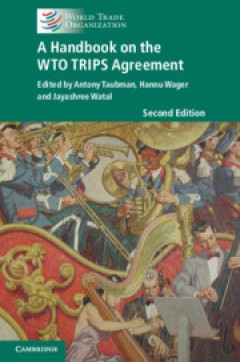
A Handbook on the WTO TRIPS Agreement
This handbook describes the historical and legal background to the TRIPS Agreement, its role in the WTO and its institutional framework. It reviews the following areas: general provisions and basic principles; copyright and related rights; trademarks; geographical indications; patents; industrial designs, layout-designs, undisclosed information and anti-competitive practices; enforcement of IPR…
- Edition
- -
- ISBN/ISSN
- 9781108883511
- Collation
- -
- Series Title
- -
- Call Number
- -
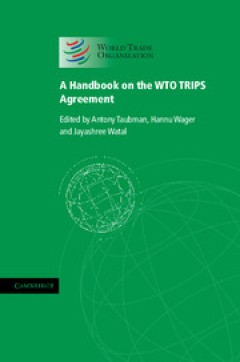
A Handbook on the WTO TRIPS Agreement
This handbook describes the historical and legal background to the TRIPS Agreement, its role in the WTO and its institutional framework and reviews the following areas: general provisions and basic principles; copyright and related rights; trademarks; geographical indications; patents; industrial designs, layout-designs, undisclosed information and anti-competitive practices; enforcement of IPR…
- Edition
- -
- ISBN/ISSN
- 9781139150606
- Collation
- -
- Series Title
- -
- Call Number
- -

Making Copyright Work for the Asian Pacific : Juxtaposing Harmonisation with …
This book provides a contemporary overview of developing areas of copyright law in the Asian Pacific region. While noting the tendency towards harmonisation through free trade agreements, the book takes the perspective that there is a significant amount of potential for the nations of the Asian Pacific region to work together, find common ground and shift international bargaining power. Moreove…
- Edition
- -
- ISBN/ISSN
- 9781760462383
- Collation
- -
- Series Title
- -
- Call Number
- 340 MAK
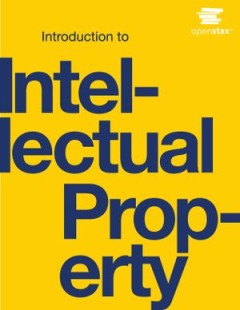
Introduction to Intellectual Property
Introduction to Intellectual Property provides a clear, effective introduction to patents, copyright, trademarks, and trade secrets. The text may be used by students and instructors in formal courses, as well as those applying intellectual property considerations to entrepreneurship, marketing, law, computer science, engineering, design, or other fields. The luminaries involved with this projec…
- Edition
- -
- ISBN/ISSN
- 9781951693343
- Collation
- -
- Series Title
- -
- Call Number
- 340 KLI i
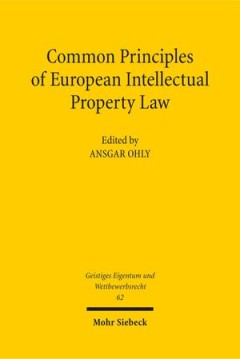
Common Principles of European Intellectual Property Law
Intellectual property law has been harmonized by EU law to a considerable extent. At the same time intellectual property rights have converged. The academic discussion has not kept pace with this development. European intellectual property law is often seen through the spectacles of national law; pan-European discussions about issues of Community law seem to be the exception rather than the rul…
- Edition
- -
- ISBN/ISSN
- 9783161518263
- Collation
- -
- Series Title
- -
- Call Number
- 340 OHL c
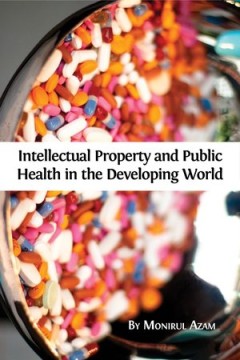
Intellectual Property and Public Health in the Developing World
Across the world, developing countries are attempting to balance the international standards of intellectual property concerning pharmaceutical patents against the urgent need for accessible and affordable medicines. In this timely and necessary book, Monirul Azam examines the attempts of several developing countries to walk this fine line. He evaluates the experiences of Brazil, China, India, …
- Edition
- -
- ISBN/ISSN
- 9781783742301
- Collation
- -
- Series Title
- -
- Call Number
- 340 AZA i
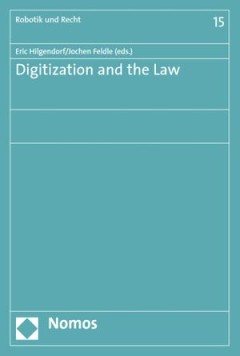
Digitization and the Law
"Digitization of information" means, to state it in the simplest way possi‐ ble, the representation of information as a sequence of zeros and ones. Digitized information can be edited, stored and easily transferred between computers. In view of the high power of today's computers and their glob‐ al networking via the Internet, this means that vast amounts of information can be processe…
- Edition
- -
- ISBN/ISSN
- 9783848747009
- Collation
- 140 halaman
- Series Title
- -
- Call Number
- 340 DIG
 Computer Science, Information & General Works
Computer Science, Information & General Works  Philosophy & Psychology
Philosophy & Psychology  Religion
Religion  Social Sciences
Social Sciences  Language
Language  Pure Science
Pure Science  Applied Sciences
Applied Sciences  Art & Recreation
Art & Recreation  Literature
Literature  History & Geography
History & Geography